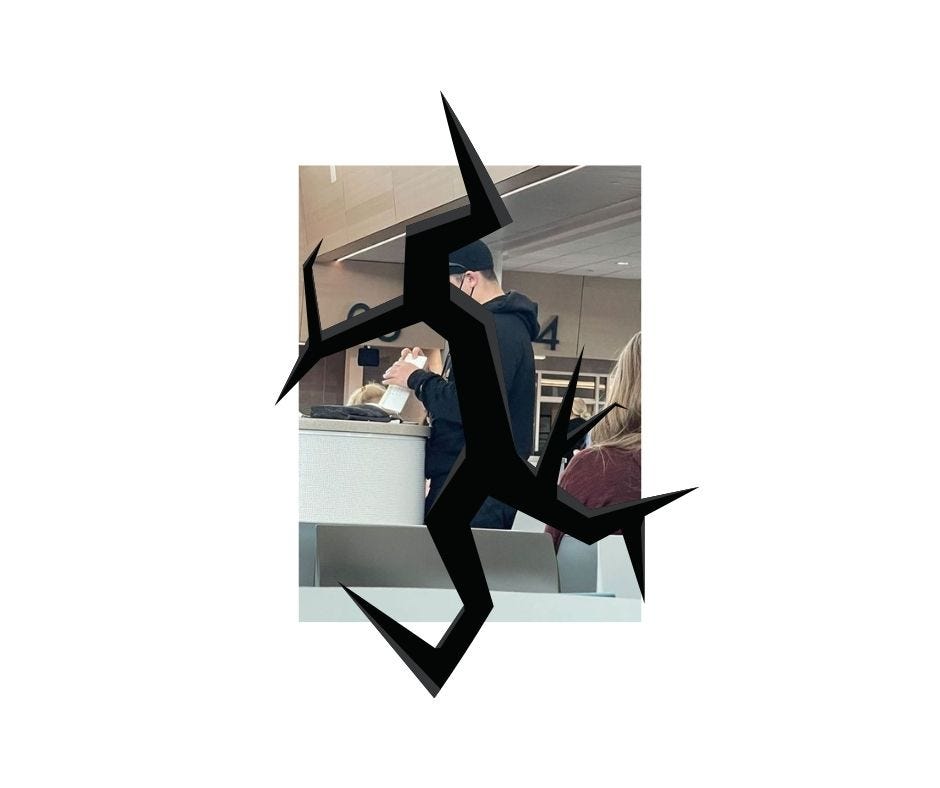Online Rage
Over on our Facebook, we reached over 90K people with an update on Kyle Rittenhouse’s increasing presence in the area, from having furniture delivered to a house in Stead, to buying a truck at a local dealership and having it serviced there, to going to the local DMV and other recent sightings.
There were 1.5K comments on our post on Facebook until we decided to stop them, as these were getting repetitive and many were from outside Reno, which has never been the point of our hyperlocal street reporting collective. On Instagram, there have been over 700 comments.
We also received multiple direct hate messages and threats via Facebook, which has proven to be the most potentially toxic of our social media. To keep our growing Twitter account a safer space, we did some blocking there to keep our teams of reporters safe from any potential abuse on that platform.
Comments on Facebook and Instagram ranged from those supportive of our efforts to inform the community to outrage. There was also a camp (overlapping both the anti and pro Rittenhouse groups) wondering why we were reporting about him in the first place and alleging that what we do is not “journalism.”
According to the American Press Institute, journalism is “the activity of gathering, assessing, creating, and presenting news and information.”
Rittenhouse, cleared in November of multiple charges, is also clearly a public figure, as his December Phoenix appearance at a Turning Point USA “AmericaFest” demonstrated. He is not shying away from attention, recently posting a picture of himself with former President Donald Trump on his Instagram, creating an “anti-media” website, or speaking on different shows, including the Dinesh D’Souza podcast. His fundraising is now focused on “help[ing] hold the worst offenders in our media accountable in court for their malicious and defamatory lies.”
Bottom-Up Rather than Top-Down Journalism
Rolling Stone wrote in a headline [part of collage above] that he was “being handed the torch of conservative victimhood for the next generation.” In fact, Rittenhouse has now been propelled, by his own willingness and past violent, deadly actions, on the fault line of our national body, electorally, socially and otherwise.
Dave Holmes recently wrote in Esquire: “Rittenhouse himself has shown—or at least been advised to pretend to show—some awareness of the gravity of having killed two people and maimed a third. Some of his elders have not. On [the] Blaze podcast, co-host and apparent adult human being Sydney Watson said it was “impressive” that of all the people Rittenhouse could have shot at, he “killed probably two of the worst on the planet,” going on to actually congratulate him. Rittenhouse replied that the killings were “nothing to be congratulated about,” and that in retrospect, it was “not the best idea to go down there.” If Rittenhouse is aware that what happened was a mistake, how long can an 18-year-old hold onto that idea when he’s surrounded by adults—wealthy adults, famous adults, important adults— who are rewarding him for that mistake with the love and attention for which he’s clearly starved? In any other context, a mistake that leaves people dead is a tragedy. In this one, a not-insignificant segment of our population is rudderless enough to consider the mistake a triumph, and the young man who made the mistake a hero.”
That he killed during a Black Lives Matter 2020 protest after the shooting of a Black man by a Kenosha, Wisconsin, police officer, a 20-minute drive from his then home in Illinois, crossing state lines and arriving at the protest armed at 17, is not something that we take lightly. We believe reporting should be in the service of the most vulnerable in our community, including potential victims of racism and discrimination.
Six years ago we began reporting mostly about the growing number of unhoused in our community, the destruction of motels, gentrification forces such as the “fight on blight,” and the lack of accessible, affordable housing. We were not wrong to focus on these issues. Our stories which have gotten the most traction though are the ones about the Black Lives Matter movement and racism in our midst. Why? Because people in northern Nevada deeply care about these issues as well, as these also represent a litmus test on the progress of our humanity.
We believe in bottom-up journalism, such as when an unhoused person sends us videos or photos from inside a local shelter, we post these to show what conditions are actually like, rather than relying on “media tours” when everything is new or has been cleaned up.
We believe in building trust with our community so that members feel safe to share information with us that they deem important, such as was the case recently of indications of Rittenhouse’s growing presence in northern Nevada.
Top-down journalism takes the opposite approach: cultivating relationships with the powerful, and only trusting what some people call “credible sources,” i.e. people with money and power, rather than the drivers who initially pointed out their delivery to Rittenhouse at a home in Stead.
There were those who also doubted our reporting entirely, as if we didn’t take what we post seriously.
We promise to those still following our multiple channels that we will not cower, and that we will pursue community journalism, for the community, by the community, about the community.
Our Reporting This Week about Green Initiatives, Mutual Aid Groups, Housing as a Human Right and New Restrictions at the Cares Campus
Our other reporting this week enhanced our #keeprenogreen series highlighting The Radish Hotel and our #heroesofreno showcasing Spencer Banda helping several mutual aid groups.
We also looked into new restrictions for volunteer groups at the Cares Campus compound.







I really wish this were not true, but it is important to be informed. Thank you for your journalism.